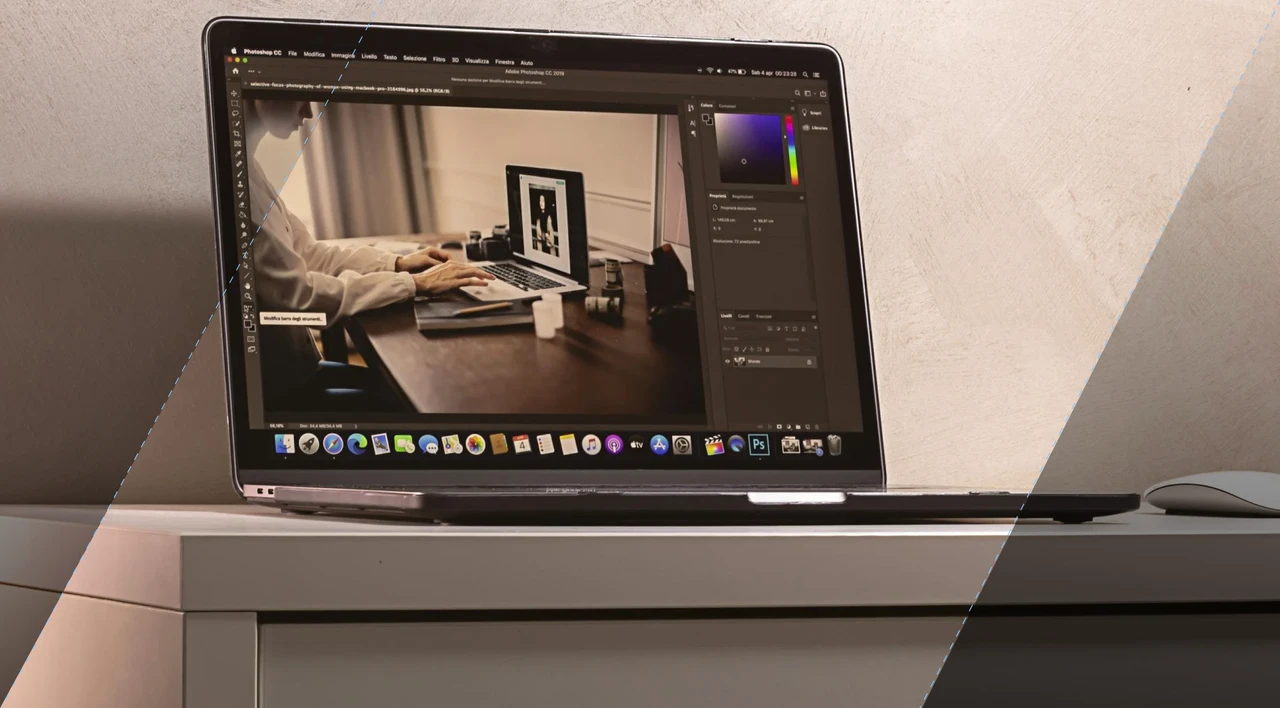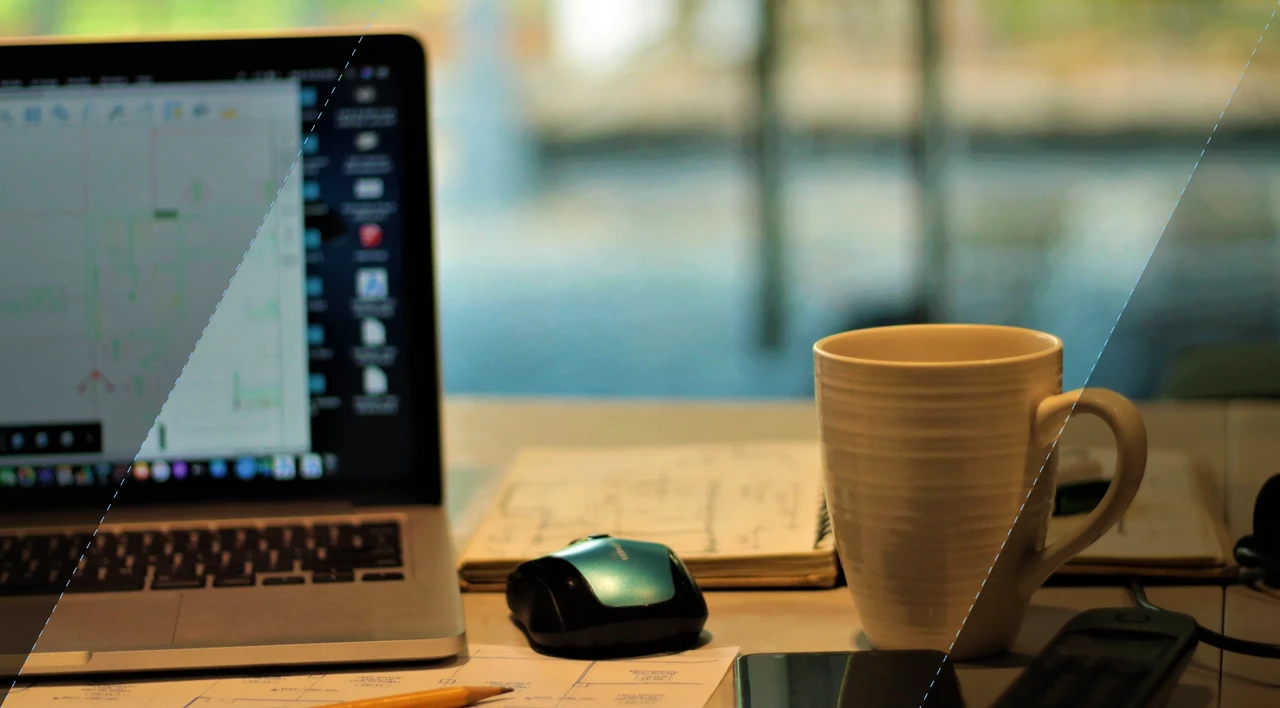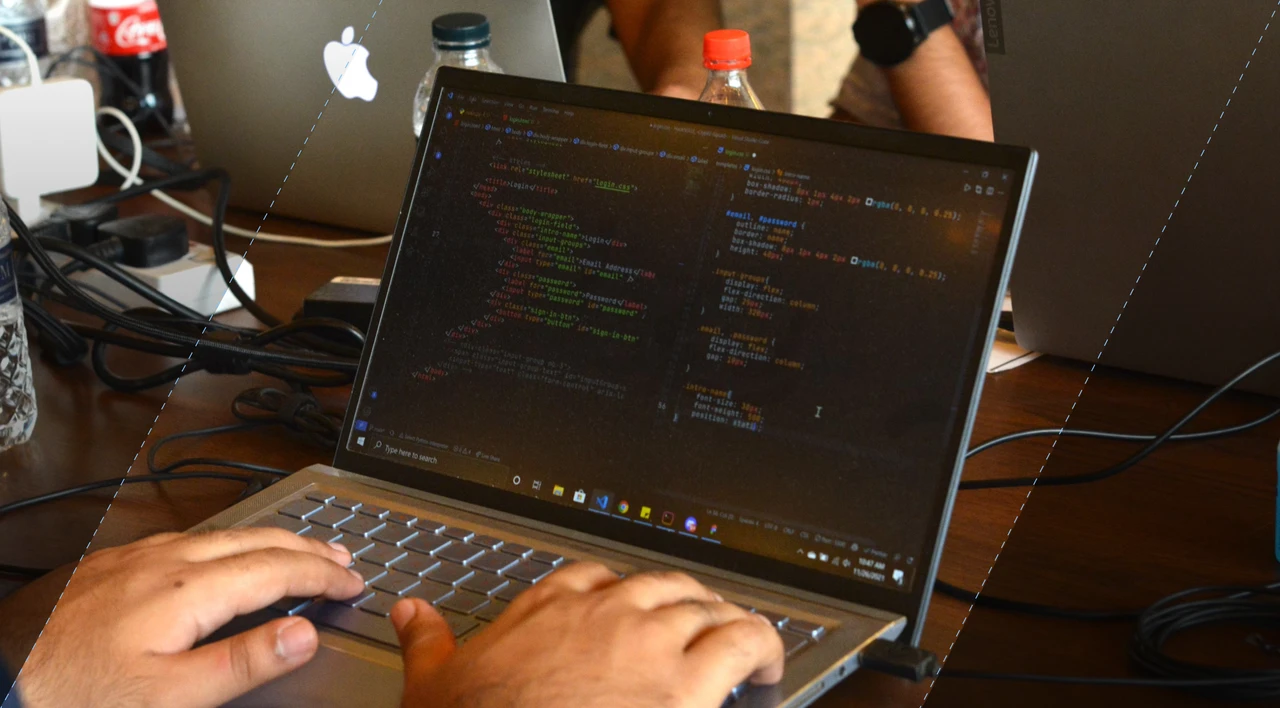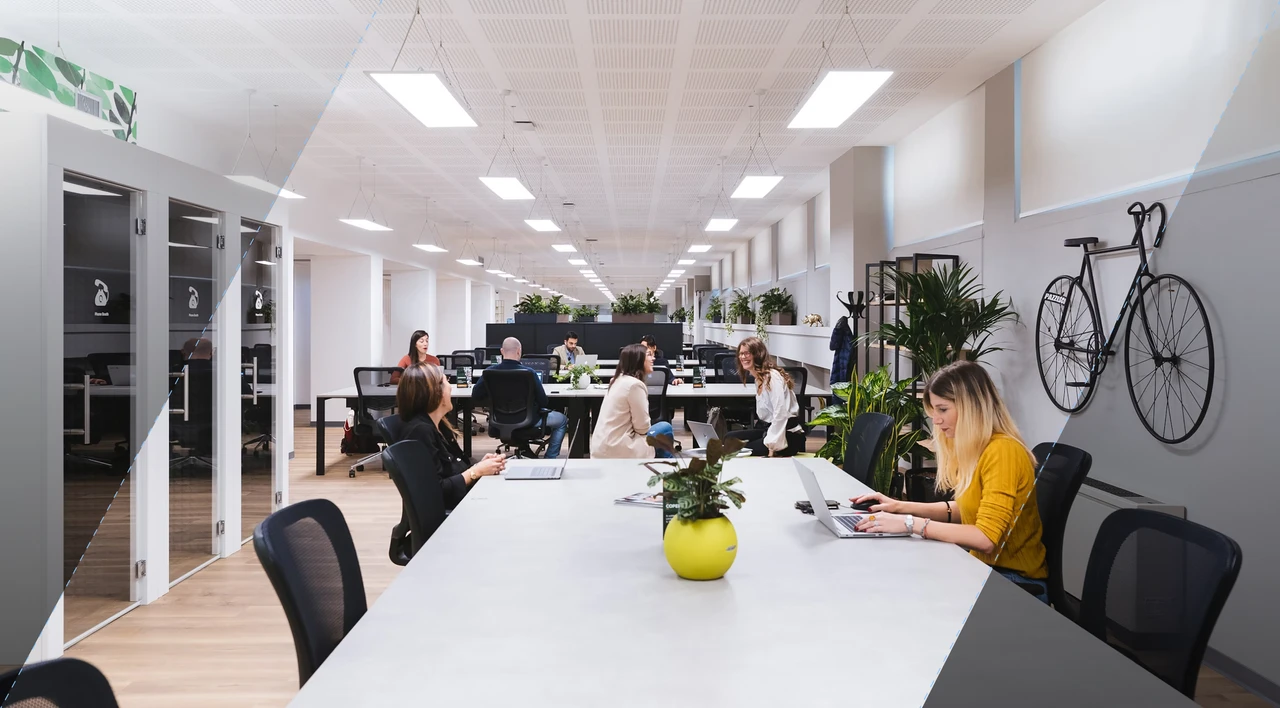SHARE
Learn the Essentials of Digital Product Design

Contents
Contents
Global spending on virtual goods surpassed $110 billion in 2021, more than double the total spend in 2015. But do you ever wonder what goes into creating a successful digital product? How do designers come up with innovative ideas that captivate users and solve their problems? Discover the world of digital product design and unlock the secrets behind creating products that leave a lasting impact.
Digital product design is a dynamic process that involves imagining, conceptualizing, testing, iterating, and refining a product, service, or experience. But it’s more than just aesthetics and functionality; it’s about understanding user needs, industry trends, and business goals. Hiring a product designer can end up being a huge cost saver.
So, what are the essentials of digital product design and how can they help you create user-centric designs that set your product apart? Let’s dive in and explore the world of digital product design together.
Key Takeaways:
- Digital product design is a process of imagining and refining products to meet user needs.
- Good design should be innovative, useful, aesthetic, unobtrusive, honest, long-lasting, thorough, environmentally friendly, and simple.
- Digital product designers play a crucial role in the design process, improving existing products and creating new ones.
- By embracing the essentials of digital product design, you can create products that captivate users and drive business success.
What is Digital Product Design?
Digital product design is the process of creating digital solutions that address user needs and business goals. It encompasses the conception, planning, and execution of digital products, such as websites, mobile apps, and software applications.
75% of users judge a websites’ credibility by its design. The goal of digital product design is to create products that are not only visually appealing but also functional, user-friendly, and capable of delivering a seamless user experience.
Key aspects of digital product design include:
- User Research: Understanding the target audience through various research methods, such as surveys, interviews, and usability testing. This helps designers create products that meet user needs and preferences.
- Interaction Design: Focusing on how users interact with the product, ensuring intuitive navigation and user-friendly interfaces. This involves designing buttons, menus, and other interactive elements that users engage with.
- Visual Design: Crafting the visual aspects of the product, including layout, color schemes, typography, and imagery. The goal is to create an aesthetically pleasing product that aligns with the brand identity and enhances user engagement.
- Prototyping and Testing: Developing prototypes to visualize the product’s design and functionality. This stage involves testing the prototypes with users to gather feedback and make necessary adjustments before the final development.
- User Experience (UX) Design: Ensuring the overall experience of using the product is smooth and enjoyable. UX design focuses on the product’s usability, accessibility, and the satisfaction it provides to users.
- User Interface (UI) Design: Creating the graphical layout of the product, including buttons, icons, and other visual elements. UI design ensures that the product is visually cohesive and easy to navigate.
- Collaboration with Developers: Working closely with developers to ensure that the design is feasible and effectively implemented. This collaboration ensures that the final product aligns with the initial design vision and functions as intended.
Digital product design is a multidisciplinary field that requires a blend of creativity, technical skills, and a deep understanding of user behavior. By mastering the essentials of digital product design, you can create innovative and effective digital solutions that delight users and drive business success.
The Importance of User-Focused Design in Digital Product Development
When it comes to digital product development, user-focused design is not just a nice-to-have; it is absolutely essential for creating successful products. By prioritizing the user experience and working backwards to incorporate innovative technology, you can ensure that your products truly meet the needs and expectations of your target audience.
One of the key aspects of user-focused design is usability. 94% of people named easy website navigation as their number one priority when using digital products or platforms. Your design should prioritize simplicity and intuitiveness, making it easy for users to navigate through your product and accomplish their goals. A user-friendly interface not only enhances the user experience but also increases user satisfaction and encourages repeat usage.
To create an effective user-focused design, it is critical to thoroughly understand the needs and preferences of your users. Conducting user research and usability testing can provide valuable insights into their behaviors, pain points, and desires. By empathizing with your users, you can create designs that are not only aesthetically pleasing but also cater to their unique requirements.
To summarize, user-focused design is a fundamental aspect of digital product development. By prioritizing usability, understanding user needs, creating unobtrusive designs, and incorporating user feedback, you can create products that truly resonate with your target audience and drive business success.
The Nuances of Digital Product Design
Digitally mature companies are 23% more likely to be profitable than their less-digital peers in product development. Digital product design is a distinct discipline with key differences from physical goods manufacturing. Understanding these nuances is essential for successful digital product development that meets user needs and drives business outcomes.
Embracing Agility and User Feedback
The global usability testing tools market is expected to reach USD 4.818 million in 2031. In digital product design, agility and user feedback are paramount. Embracing an agile mindset and methodology empowers designers to quickly iterate, test, and refine their designs based on user feedback. Regular user testing and feedback collection sessions ensure that the product continues to align with user needs and preferences, resulting in an optimal user experience.
User-Centric Design within Limited Time Frames
Compared to physical goods manufacturing, digital product development tends to have shorter runways and tighter deadlines. This necessitates a strong focus on user-centric design within limited time frames.
Designers must prioritize understanding the target users, their needs, and pain points to create intuitive and valuable experiences. The iterative design process is crucial for refining the product and meeting user expectations within the given time constraints.
Adaptability and Flexibility
Digital product design offers greater adaptability and flexibility compared to physical goods manufacturing processes. Designers can leverage data-driven insights and user feedback to make informed decisions and adapt the product accordingly.
This agility allows designers to respond to emerging trends, technology advancements, and user preferences, ensuring that the product remains relevant in a dynamic digital landscape.
|
Digital Product Design |
Physical Goods Manufacturing |
|
Continuously improved and updated based on user feedback |
Fixed designs and limited opportunities for improvement |
|
User-centric design within limited time frames |
Longer manufacturing processes and timelines |
|
Adaptable and flexible to meet changing needs and preferences |
Fixed features and designs |
|
Embraces agility and prioritizes user feedback |
Relies on market research and static design processes |
The Role of a Product Designer
In the world of product design, the role of a product designer is indispensable. They are the creative force behind the design process, responsible for overseeing the development of new products and enhancing existing ones.
Combining their creativity and technical skills, product designers ensure that a product is not only functional but also aesthetically pleasing, meeting the needs and expectations of the end user.
In the US, the average salary of a digital designer is $96,153. A product designer collaborates closely with other professionals, such as UX designers, researchers, and project managers, to create user-centric designs. By conducting thorough research and understanding user behavior and preferences, product designers are able to craft designs that truly resonate with the target audience.
The primary focus of a product designer is on the design and usability of the product. They carefully consider factors such as user experience, ergonomics, and user interface to ensure that the product is intuitive and easy to use.
Unlike a product manager, who primarily focuses on the strategic aspects of product development, a product designer is primarily concerned with the creative and visual aspects of the product. They work diligently to bring ideas to life and take on the responsibility of refining and improving the design until it meets the highest standards.
The Design Process:
To get a clearer idea of the role of a product designer, let’s have a look at the typical design process:
- Research and Analysis: Product designers conduct extensive research to understand the user’s needs, market trends, and competitors. They analyze data, conduct user interviews, and gather feedback to identify areas for improvement.
- Ideation and Concept Development: Based on the research findings, product designers brainstorm ideas and develop concepts that align with user needs and business objectives. They create sketches, wireframes, and prototypes to visualize and communicate their ideas.
- Design and Iteration: The product designer begins the actual design process, creating detailed designs and iterating based on user feedback and usability testing. They refine the design until it meets the desired standards of functionality, aesthetics, user-friendliness, and accessibility.
- Collaboration and Communication: Throughout the design process, product designers collaborate with cross-functional teams, including engineers, marketers, and project managers. Effective communication and collaboration are crucial for integrating all aspects of product development and ensuring success.
- Finalization and Handoff: Once the design is complete, the product designer prepares design specifications, style guides, and documentation for handoff to developers and other teams involved in the product development process.
In summary, a product designer plays a vital role in the product design process, taking on the responsibility of creating visually appealing and user-centric designs. By understanding user needs, collaborating with cross-functional teams, and leveraging their creative and technical skills, product designers contribute to the success of a product.
The Relationship Between Product Design and Business Outcomes
Product design plays a crucial role in determining business outcomes. Research has shown that companies that prioritize product design tend to deliver higher returns to shareholders and achieve greater revenues compared to industry benchmarks. For every £100 a design alert business spends on design, it increases turnover by £225.
Well-designed products that effectively meet user needs and provide positive experiences can drive customer satisfaction, foster loyalty, and ultimately contribute to increased profitability.
By aligning good design principles with business goals, companies can gain a competitive edge in the market. Investing in product design can yield tangible benefits, as customers are more likely to choose products that are aesthetically pleasing, functional, and user-friendly. In turn, this can lead to increased sales, customer retention, and overall business growth.
Business Outcomes from Effective Product Design:
- Increase in customer satisfaction
- Higher customer retention and loyalty
- Improved brand perception and reputation
- Increased market share
- Enhanced competitive advantage
- Expanded customer base
Conclusion
Digital product design is a complex process that requires understanding user needs, industry trends, and business goals. By prioritizing user-focused design, companies can create successful digital products that meet user expectations. Product designers ensure that products are functional, visually appealing, and aligned with user needs.
Good design enhances user experience and helps businesses stand out in the market. Digital product design allows for continuous improvement, keeping products relevant as user needs evolve.
As technology advances, the importance of digital product design will grow. Employing best practices and principles of good design enables businesses to create digital products that solve real problems and delight users. Whether designing a mobile app, website, or software solution, good design is key to your digital product’s success.
Discover how Flatirons’ UX design services can help you to create a bespoke, visually stunning website tailored to your business’ needs.
Frequently Asked Questions
What is digital product design?
Digital product design is the process of imagining, conceptualizing, testing, iterating, and refining a product, service, or experience to meet the needs of the end user.
Why is user-focused design important in digital product development?
User-focused design is essential in digital product development because it prioritizes usability, keeps the product simple and intuitive, and ensures that the design meets user expectations.
How does digital product design differ from physical goods manufacturing?
Digital product design differs from physical goods manufacturing in that digital products can be continuously improved, have shorter development time frames, and offer more adaptability and flexibility in design workflows.
What is the role of a product designer?
A product designer plays a crucial role in the product design process, overseeing the design stage and ensuring that a product is functional, aesthetically pleasing, and aligned with user needs.
How does product design impact business outcomes?
Research shows that businesses excelling in product design tend to deliver higher returns to shareholders and higher revenues compared to industry benchmarks, as well as drive customer satisfaction, loyalty, and profitability.
UI/UX Design Services
UI/UX design services tailored for your unique needs.
Get the CEO's Take
Handpicked tech insights and trends from our CEO.
UI/UX Design Services
UI/UX design services tailored for your unique needs.
Get the CEO's Take
Handpicked tech insights and trends from our CEO.

Digital Product Development: Enhance Your Business Offerings
Flatirons
Sep 12, 2025
React SEO: Optimize Your React Apps for Search Engines
Flatirons
Sep 07, 2025
Will Software Engineers Be Replaced by AI?
Flatirons
Aug 31, 2025
Best Data Analytics Strategy for Business Growth
Flatirons
Aug 25, 2025
Ruby Case Statement: A Simplified Approach to Conditional Logic
Flatirons
Aug 19, 2025
Team Augmentation: Enhance Your Workforce Capabilities
Flatirons
Aug 13, 2025